- Narragansett Beer Guide: Everything to Know About This Historic Brewery - November 9, 2022
- 6 Best Breweries in Duluth MN: Can’t Miss Spots - November 9, 2022
- Best Breweries in Chicago: Where to Drink in the Windy City - October 28, 2022
Bock beers are a style that I’ve been getting into lately. Named after a mispronunciation from the Bavarian dialect, you can now see bock beers worldwide. Bock beers originated in Einbeck, Germany. This beer style varies from copper to brown in color, has a decent malt content, and contains little-to-no types of hops.
Are you interested in learning more about this type of beer? Here, I will offer an in-depth guide about the best bock beers, including the different types, what I like and dislike about this beer style, and some of my recommendations.
About Bock Beers
Bock beers are a malt-forward beer style that has a robust flavor. Traditional bocks use Vienna and Munich males, producing roasted and caramel flavors. Most bock beers only contain enough hops to hold up the malt and balance out the sweet flavors.
This centuries-old beer has undergone several redos throughout the years. It was initially an ale and is now brewed as a lager. Brewing technology has also improved, so you can enjoy a bock worldwide.
Types of Bock Beers
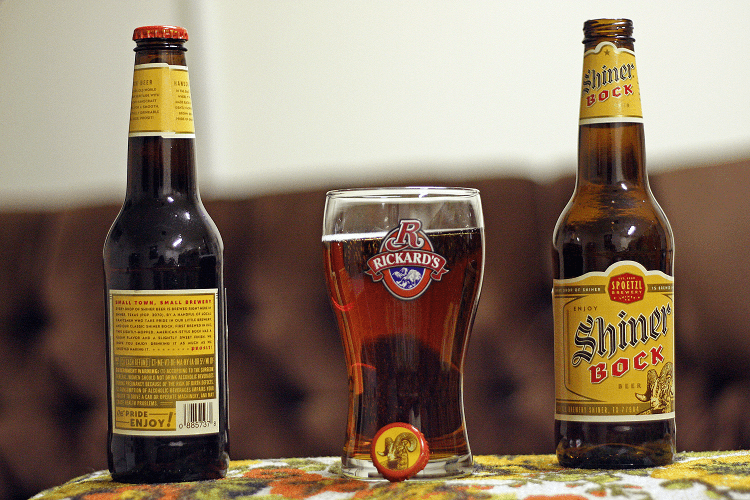
Since the inception of bock beers, brewers have become creative and created a wide variety of this beer style. Here are a few other types of bock beer you should try.
Doppelbock
The doppelbock is one of my favorite types of bock beers. “Doppel” is German for “double.” As you can expect, this means double the malt, which is why this beer is nicknamed “liquid bread.”
The doppelbock was first brewed by Paulaner monks in the 17th century. They were brewing hyper-malted beer to drink during Lenten fasts. It was quickly nicknamed the “Salvator” (translates to “Savior”). The powerful and hearty flavors of this beer soon spread worldwide.
Double the malt also means a higher ABV. The average bock beer has between 6%-7% ABV, while the average doppelbock has an ABV surpassing 7%.
Even though doppelbocks contain more malt, they range from pale to dark in color. The color of the beer dictates the type of malt used. Most doppelbocks are dark in color, thanks to the use of Vienna and Munich malts. But if a brewer uses Pilsner malts, the doppelbock will be lighter in color. Lighter doppelbocks may also contain more hops, though it’s rare to find a hoppy doppelbock.
Most doppelbocks are sweeter in flavor, highlighting notes of caramel, toast, raisins, toffee, chocolate, and even prunes. Because of the sweetness and robust flavors, this beer is perfect to enjoy during the winter — especially since the Lenten fast first begins in February.
Maibock
If you prefer a lighter bock beer, you would like the maibock. It’s nicknamed the “Helles bock” since “Helles” translates to “light.”
But don’t be thwarted by this light beer style. First, the ABV is higher than expected — at an average of 6.8%, the maibock is stronger than many traditional bock beers.
This beer type tastes more complex than expected; it’s often brewed with Pilsner malt in addition to Munich and Vienna malts. Like the Helles, the maibock has a bready flavor with more toasted flavors from the Munich and Vienna malts.
It’s also not surprising to find a maibock that tastes hoppier, though the maibock traditionally isn’t a hoppy beer. Traditional maibocks use Noble hops, which are bitter yet peppery.
Since the maibock is a lighter beer style, it was traditionally enjoyed during the Spring time.
Eisbock
An Eisbock is similar to a doppelbock but involves freezing the beer during the brewing process. “Eisbock” actually translates to “ice bock.” Once the water freezes, the ice is skimmed off. This results in an even stronger bock beer; the average Eisbock has an ABV that usually starts at 9% and can get as high as 13%.
Freezing the water does more than creating a stronger beer. The ice concentrates the body and flavor of the beer. Plus, the cold temperatures balance the malts without adding more hops. This is why most Eisbocks barely contain any malt.
Weizenbock
Weizenbocks are a wheatier version of the classic bock beer. Think of this beer as the best combination between a doppelbock and a hefeweizen. The beer is brewed with weizen ale yeast and malt.
Because of the yeast, this beer style is cloudy in appearance. Unlike traditional bocks, these beers are top-fermenting ales. The beer style was first introduced in the early 20th century and is one of the first wheat beers introduced in Bavaria.
History of Bock Beers
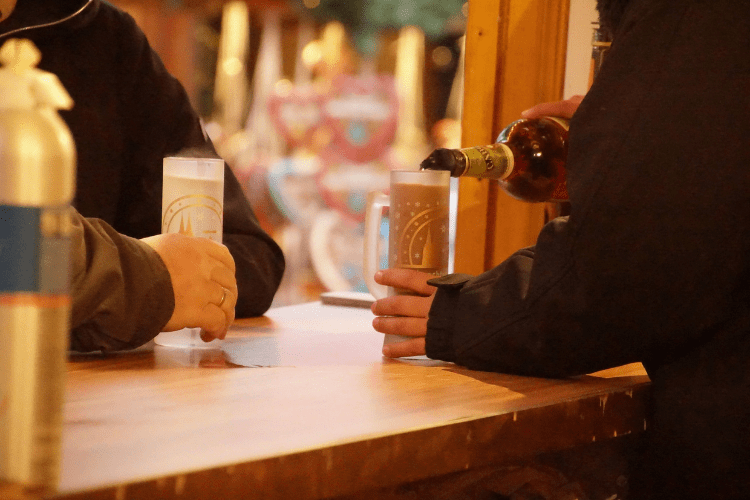
Bock beers were first brewed in Einbeck, located in Northern Germany. While we don’t know exactly when the first bock beer was brewed, we suspect it could be as far back as the 1400s. But by the 1600s, the beer made its way to Munich.
Previously, the beer was just called “Einbeck.” But when the beer made its way to Munich, the Bavarian accent butchered the pronunciation of Einbeck. Instead of saying Ein-beck, the Bavarians would say Ein-bock. The hilarity of this mispronunciation is that “einbock” means “billy goat,” so it sounded like the Bavarians were calling the beer “billy goat”. This is why you’ll often see a goat on the label of bock beers.
The goat also signifies the bock beer in different ways. For example, the goat is the symbol of the astrological sign Capricorn. Since bock beers are often enjoyed during the winter (end of December/early January starts Capricorn season), the goat signifies that wintertime comes bock season.
Over time, the einbock beer was shortened to bock. Since its inception, there have been many bock beer styles, as I mentioned previously. And because Germans have immigrated throughout the world over the past several centuries, you can find traditional bocks everywhere — especially in the U.S. I will mention a few of my favorite American bocks later in this article.
Likes and Dislikes of Bock Beers
I’ve been into bock beers lately, but they’re not my favorite beer types. Here are some of my likes and dislikes of the bock beer style.
Likes
- Full-bodied flavor
- Intense malt content
- A sweet and nutty flavor
- Delicious aroma
- Strong ABV
Dislikes
- Old beer style, unique bocks aren’t always better
- German bocks are better than American bocks
Tips to Find and Drink the Best Bock Beer
I love historic European beers. I tend to focus on the oldest breweries when finding a great classic beer style. But most Weihenstephaner and Paulaner beers I drink are in bottles, so I have to rely on local breweries here in the U.S. if I want a fresh classic beer style on tap. Unfortunately, many American breweries also get these beer styles wrong.
The same can go for bock beers. While you can find great bock beers in the country, you can find just as many that get the beer style wrong. This is what I’ve learned when trying bock and other classic German beer styles in the U.S. and other non-European countries.
Avoid Trendy Breweries
The biggest piece of advice I have to offer is to avoid trendy breweries when finding a bock beer. Call me a hipster, but if a brewery is more of a merch store than a place that brews high-quality beer, I’m not stepping foot in that brewery.
I come across these breweries all the time. You can find their beers on tap and in stores everywhere, but they’re nothing impressive. These breweries just exist for profit and not for brewing delicious beer that respects tradition and history.
I’ve had my fair share of experienced trying classic beer styles at these trendy breweries. I once had a German Pils at a trendy brewery in Austin. The malts tasted like syrup, and I had to fight to finish the beer. I’m sure I’ve had similar experiences drinking malt beer from some of these hipster breweries.
What if your friends push you to go to those breweries? Or if trendy breweries are the only fresh beer option you have in your area? I would flat-out refuse to go. But I recommend trying some traditional bock styles before drinking bock beers from your hipster brewery.
You only get a fraction of the flavor when you drink from a bottle. But at least you’ll have an idea of the malt flavor and content, so you can get a better view of this beer. I will recommend some traditional German breweries that make the best bock beers. Most of these beers are imported into the U.S. and other major countries, so you should be able to find those beers at your local liquor or beer store.
Serve It at the Right Temperature
Bock beers are best served at slightly warmer temperatures than their lighter counterparts (maibock and Eisbocks are the exceptions). The ideal bock temperature is between 41-48 degrees Fahrenheit. If you serve your bock beer too cold, the chilly temperature will mask its complex malt profile. But if you serve your bock beer too warm, the carbonation decreases, leading to your beer tasting flat.
If you’re serving your own bock beer out of a bottle, you should know how to best serve it. The average refrigerator is 40 degrees Fahrenheit. I suggest leaving your bock beer in the fridge but taking it out 10 minutes before drinking it. This way, it will warm up a few temperatures without getting too warm.
Smell It First
When you serve a bock beer, pour it into a glass and give it a good whiff. Bock beer should smell toasted and malty. There should be no fruity or hoppy hints.
The exception is if you’re serving a doppelbock (which may have some fruit notes) or a maibock (which may be brewed with more Noble hops). Smell your bock beer immediately after you pour it. The scent quickly dissipates, so you’ll want to smell it before taking a sip.
Barely There Hops
As stated previously, most bock beers shouldn’t have a significant hop profile. The exception is maibock beer, which has more Noble hops. While Noble hops have a bitter flavor, they’re balanced by a peppery taste. In other words, your bock beer (including maibock beer) shouldn’t taste like an IPA.
In all bock beers, malt should be the overpowering flavor. While malts are sweeter and nuttier, the caramel and toasted flavors should be well-balanced and enjoyable, even for beginners.
Enjoy Yourself
I admit it. I’m a beer snob. While I only hope to recommend the best bock beers to all of you readers, I understand that not everyone is a beer connoisseur. At the end of the day, relaxing with a delicious beer is the most important thing. So be sure to crack open a bock beer on a cold winter day or go to your favorite brewery with friends that serves bock beer on tap. Maybe you even want to plan a trip to Germany and try bock beer in Einbeck!
My Favorite Bock Beers
Now that you know all about the bock beer style, it’s time to try some beers! Here are a few that I recommend.
Weihenstephaner Korbinian

The first beer I recommend is Weihenstephaner’s doppelbock Korbinian. Weihenstephaner is the oldest brewery in the world, its history tracing back to the year 1040. Weihenstephaner named this beer after Saint Korbinian, who founded Weihenstephan Monastery.
This award-winning doppelbock is perfection; it has a malty and bold taste but a clean finish, resulting in a beer you can drink at any time. Overall, this is one of Weihenstephaner’s richest beers and is one I enjoy frequently. I taste notes of toffee, fig, chocolate, and even nutty flavors. The beer has a very warm taste, making it perfect to drink during the cold winter months.
Pros
- Great amber color
- Nice head
- Great malty taste
- Flavorful
Cons
- Can’t find it on tap anywhere in the US
Ayinger Celebrator
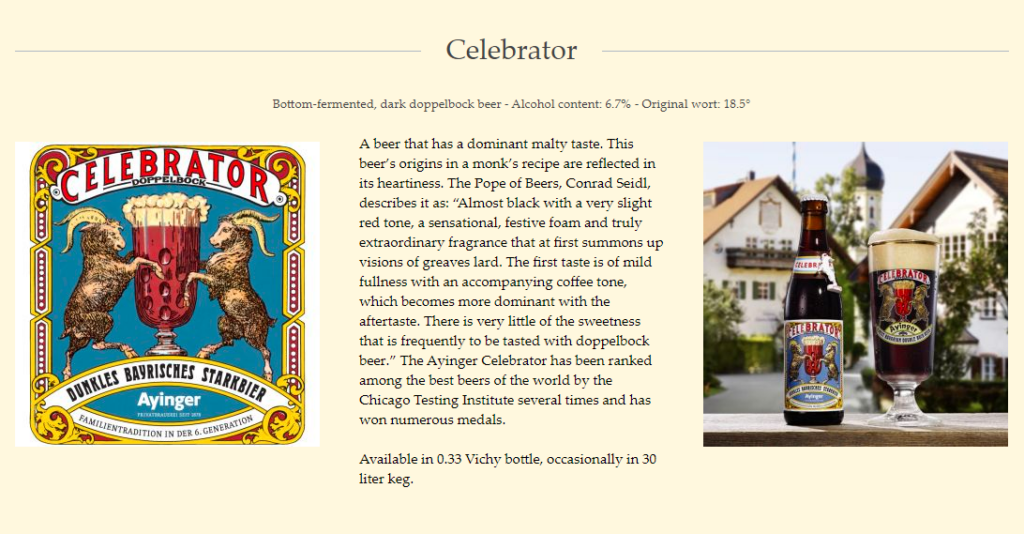
Ayinger is another popular German brewery. Located in the Bavarian town of Aying, this is another brewery that delivers its Bavarian beer traditions worldwide. Their Celebrator beer is aptly named; Celebrator is best enjoyed between winter and spring, ringing in the warmer weather.
For this beer, Ayinger uses a recipe first developed by monks. It’s a doppelbock with a 6.7% ABV. This beer has a sweet yet bold flavor, packing an impressive malty flavor profile. I taste toffee, raisins, toasted malts, and even coffee in this beer.
Pros
- Legendary beer
- Black-brown in color
- Foamy head
- Sweet flavors yet still smooth
- Nice mouthfeel
- Not too carbonated
- Subtle hops
Cons
- Rare to find it on tap in the U.S.
Paulaner Salvator

Paulaner has to be another of my favorite German breweries, and this doppelbock boasts itself as “the father of all strong beers”. At 7.9% ABV, it’s no wonder this beer developed its nickname. Paulaner has been brewing Salvator for over 375 years and still produces its original recipe to this day.
I think this doppelbock has the most complex flavor of all of these beers. I taste notes of caramel, chocolate, spice, and even dried fruit. Even though this is a strong and complex beer, I think it’s a great beer to introduce novices to the bock beer style. This is the perfect winter beer.
Pros
- Red-amber in color
- Sweet-bready taste but still light enough for novices
- Medium mouthfeel
- High ABV
Cons
- Hard to find on tap in the US
- More syrupy than other German beers
Spaten Optimator

Do you want to know how popular this beer is? I literally can’t find it anywhere in my town. I tried looking in countless beer stores, even one store that literally has any beer imaginable. Everywhere is out. While every Spaten beer I’ve had is good, the Optimator doppelbock is the most popular.
It’s loaded with flavor, specifically toffee, roasted malt, and caramel. This beer is on the hoppier side; you get a taste of Noble hops at the finish. Overall, this beer has a bold flavor that is still well-made.
Pros
- One of the best examples of the doppelbock
- Dark red-brown in color
- Malty beer and only slightly sweet
Cons
- Can’t find it anywhere in my area — even in bottles
Live Oak Brewing Primus Weizenbock
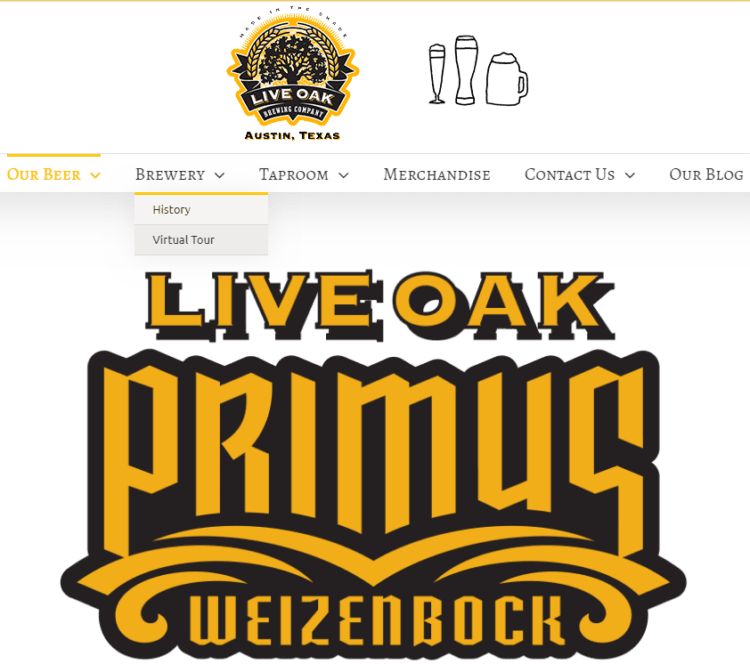
Out of all of Austin’s Live Oak Brewing’s beer, I think Primus is one of the most underrated. But among its loyal fans, Primus remains a staple.
Primus is a dark beer that combines my favorite aspects of the Hefeweizen and doppelbock. On the Hefeweizen side, this beer boasts delicious notes of banana, clove, and wheat.
All these flavors are combined with the chocolate, toffee, caramel, and malt notes of the doppelbock beer. The hops are well-balanced, so this beer tastes very smooth. And at an 8% ABV, you can have a couple of these and feel great.
Pros
- Dark brown in color
- Decent head
- Combination of toasted malt with banana
- Medium body
Cons
- Can only find in the Austin area
Saint Arnold Spring Bock

Spring Bock is a seasonal beer offered by Saint Arnold Brewing, available from February through March. While I think Saint Arnold is too much of a hyped brewery, I will admit they make good beers. With a 6.9% ABV, this bock beer has a rich taste and decent malt content.
My complaint with this beer is it leans too heavy on the floral hop side. I understand this is a spring beer, but don’t mess with original recipes. But if you’re looking for a bock beer that quenches your thirst on a warm spring day, I recommend this beer.
Pros
- Copper color
- Medium carbonation
- Good malt content
- Nice mouthfeel
- Strong flavor
Cons
- Hyped brewery
- Too complex with the floral hops
Shiner Bock
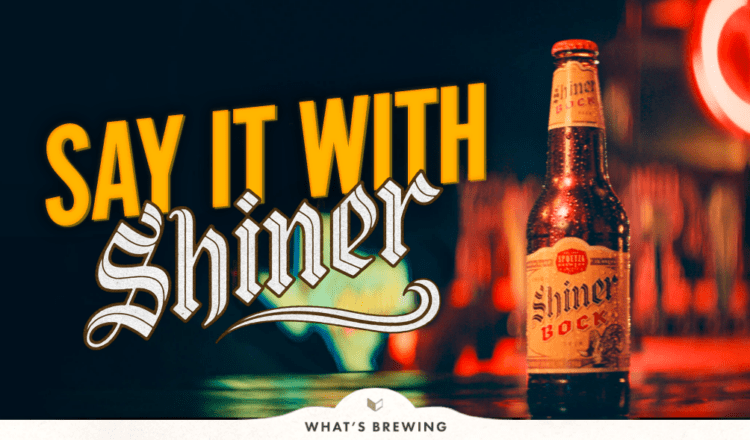
Even though Shiner is one of the biggest names in Texas beer, Shiner Bock is a decent beer. Spoetzl Brewery, which owns Shiner Beer, was formed by a German immigrant. The first Shiner Bock was brewed in the early 20th century and has since become a staple beer throughout the country.
This is more of a refreshing bock beer, but it doesn’t have the hoppy flavors that other American bocks have. When I drink Shiner Bock, I taste raisins, cherries, and toasted malt. This beer is cheap, and I’m sure everyone has tried it.
Pros
- Copper color
- Clean taste
- Easy drinking beer
Cons
- Hyped beer
- Head disappears quickly
- Not as flavorful as the other beers on this list
- Not the first beer I get if I want a bock
Troegs Troegenator
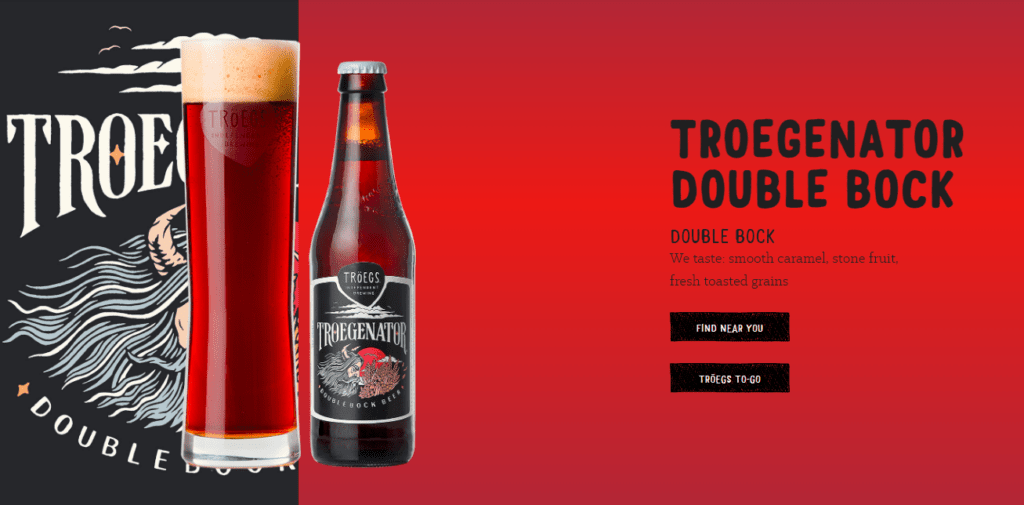
Troegs is a Pennsylvania-based brewery. Their doppelbock Troegenator is one of their staple beers. It’s a doppelbock boasting an 8.2% ABV. While this beer is best enjoyed during the cold Pennsylvania winters, it’s available year-round.
Troegs brews this beer with a combination of chocolate, Munich, and Pilsner malts. This makes it one of the most unique doppelbocks on this list, combining the flavors of raisins, dried fruit, biscuit, and butterscotch.
Pros
- Brown in color
- Sweet yet complex flavor
- Creamy
- Medium bodied
Cons
- No head
Schell’s Bock

Schell’s Bock is a limited-time beer, only available from January to March. This award-winning beer is dark in color with a malt-forward sweet flavor. You can taste toffee, caramel, and fruit in this beer, resulting in a rich flavor. It has a 6.5% ABV and is one of the best winter beers.
Pros
- Dark amber in color
- Rich caramel flavor
- Medium bodied
- Drinkable
Cons
- Too many earthy hops
Rogue Dead Guy Ale
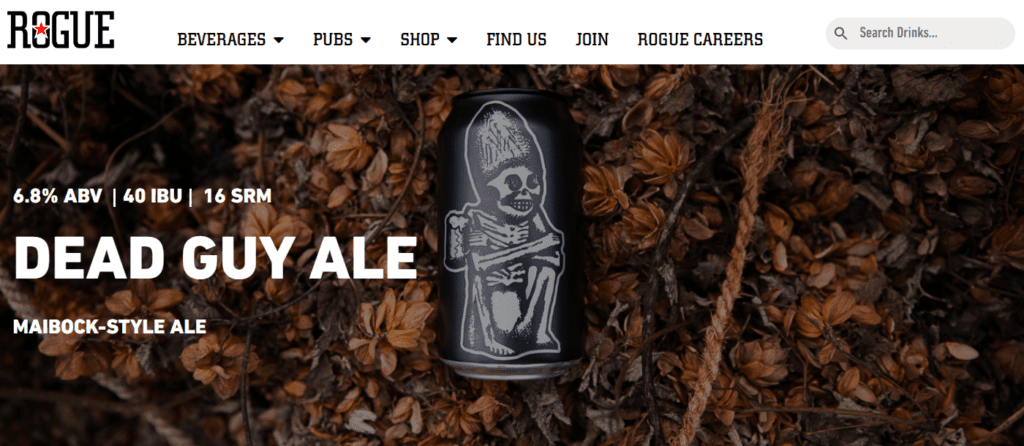
I must mention a maibock, so I recommend Rogue’s staple beer Dead Guy Ale. Rogue brewed this beer with Munich malt, Pacman yeast, and Sterling and Perle hops. The flavor profile is unique; you can taste a combination of toasted malt, toffee, and floral hops.
I personally think this beer would taste better with Noble hops. The hop content here is a little too floral, and I prefer the peppery hops with a bock beer. While I wouldn’t consider this an authentic maibock, this is an interesting beer if you want to try something different.
Pros
- Smooth and drinkable
- Decent ABV
Cons
- Too many floral hops
Pipeworks Genuine Bock
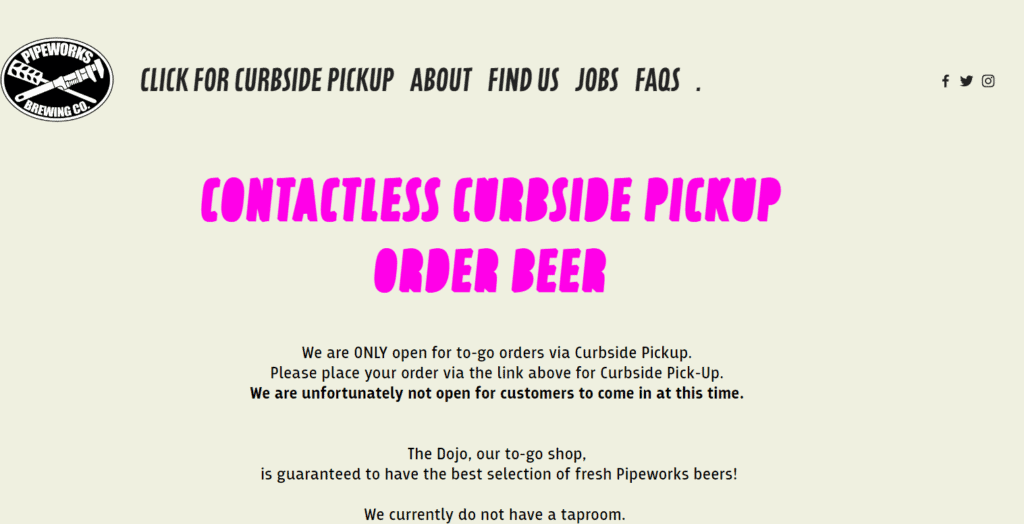
This isn’t the best take on the bock, but it’s an okay beer. First, I think Pipeworks uses too many bready malts and tastes more like a maibock or even a Helles. I can’t figure out which hops they use, but the hop profile is slightly stronger than what I prefer in a bock.
Still, I taste the characteristic flavors of toffee, dried fruit, and slight chocolate. Not terribly bad coming from a Chicago-based brewery. What I really like is the packaging. The cover of the beer features a goat, and the beer comes in at 6.66% ABV.
Pros
- 6.66% ABV
- Love the goat packaging
Cons
- Tastes more like a maibock or a Helles
Sprecher Mai Bock

Sprecher’s Mai Bock is a seasonal beer, only available from March until June. As a springtime bock, this is a lighter bock beer. The hops and malt are balanced well. The bitterness is there, but it’s subtle. I wish there was more of a malt profile, but this refreshing beer leans toward the sweet side.
Pros
- Amber in color
- Well-balanced with hops and malt
- Large head
- Crisp
- Medium-bodied
- Easy-drinking beer
Cons
- Good take on the maibock but is still different
- Reminds me more of a Pilsner
Wayfinder Funeral Bock
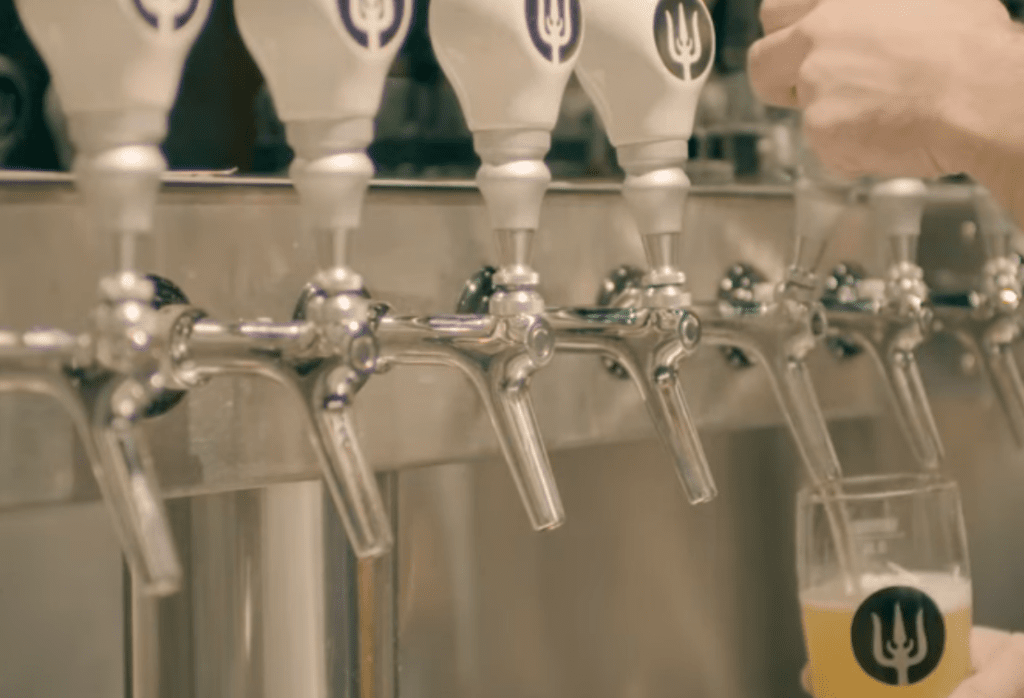
I never heard of this brewery before, and now I’m really intrigued by this beer. Wayfinder is a brewery based in Portland, Oregon. I love their packaging and their branding, especially for this beer. The packaging features an evil-looking black cat. I love kitty cats, especially spooky cats!
But what about the beer? From doing some digging, this is one of the best-rated American bock beers. Wayfinder uses Munich and roasted malts to create a beer that tastes like toffee, biscuits, caramel, and dried fruit. The beer is fermented at cold temperatures, resulting in a bold-tasting beer.
Pros
- Dark brown in color
- Uses Munich and roasted malts
- Medium-bodied beer
- Clean finish
- Strong ABV
Cons
- Head settles down quickly
Genesee Spring Bock
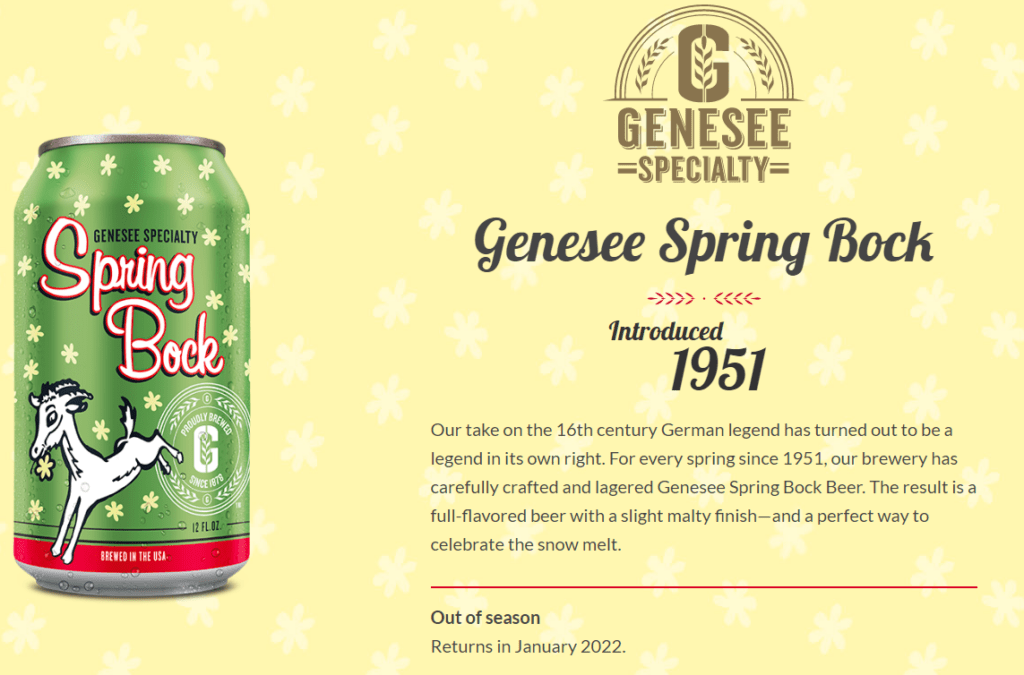
In January of every year, Genesee Brewing comes out with its seasonal Spring Bock. The beer is available until March. Genesee has been brewing this beer ever since 1951 and is the Rochester-based brewery’s take on the classic German beer. I’m intrigued by this beer because it’s malt-forward yet refreshing. It’s the perfect beer to say goodbye to winter and welcome spring.
Pros
- Deep copper body
- A refreshing yet malty beer
Cons
- Head disappears quickly
- Too many floral hops
- Not a classic bock
- Low ABV
Stevens Point Bock

Stevens Point brewery is one of the oldest in the country — formed in 1857! They first brewed their bock beer in 1938.
While they say it’s a traditional bock beer, it’s brewed with Tettnang hops in addition to Carapils and Caramel malt. Tettnang hops are on the milder side as far as taste is concerned, but the taste is a little too floral for me. Carapils malts are the perfect combination of caramel and Pilsner malts. Because of this, the beer does have a caramel-centric flavor, so it doesn’t taste bad.
I wouldn’t drink this bock if you’re looking for something authentic, but this is a good beer if you’re looking for an easy-drinking and light beer on a spring day.
Pros
- Garnet-colored beer
- Caramel-centric taste
- Brewed with milder hops
- Cheap
Cons
- Hyped beer
- Loses its foamy head quickly
Lakefront Brewery Maibock
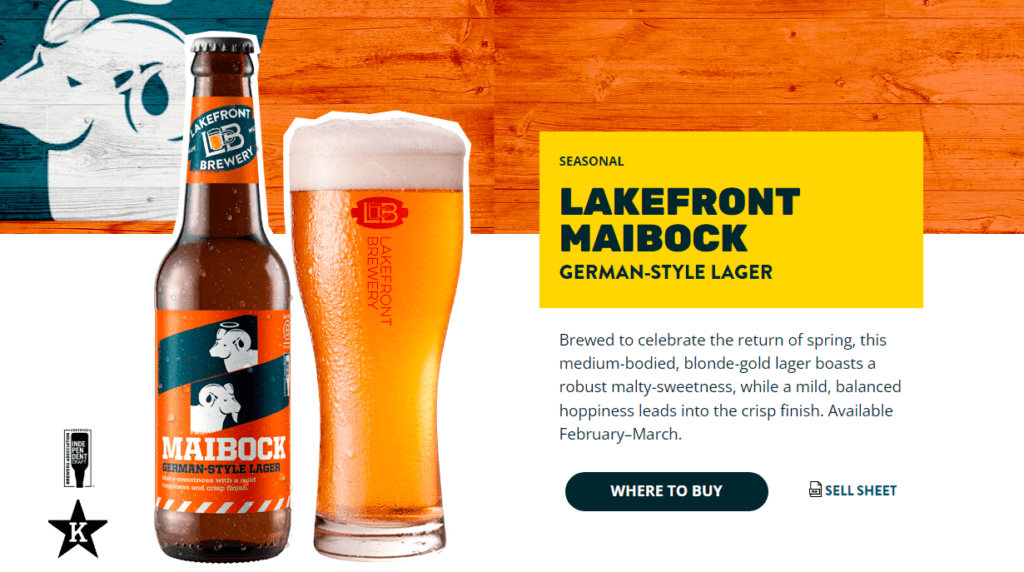
As with many of these beers, Lakefront Brewery’s Maibock is only a spring seasonal beer. It’s available from February to March. As with many of these spring bocks, this isn’t the beer to drink if you want an authentic German bock.
But if you want a refreshing and crisp spring beer, then this is a good pick. I think the floral hop profile is a little too strong, but the malt sweetness balances out the beer well.
I also get some weird flavors, such as honey, grass, caramel, and biscuit. This interesting concoction of flavors is why this beer is last on my list.
Pros
- Refreshing yet sweet flavor
- Amber color
- Easy-drinking beer
Cons
- Head quickly fades
- Thin bodied
FAQs
Question: What Makes a Beer a Bock Beer?
Answer: First, you have to use bottom-fermenting yeast at cold temperatures. The malts have to be the dominant character with only the moderate use of hops. For best results, use Munich and Vienna malts.
Question: What’s the Difference Between a Bock and a Doppelbock?
Answer: A doppelbock is the stronger version of the bock beer. Since doppelbocks contain double the malt, these beers are sweeter and are higher in ABV than traditional bock beers.
Question: When is a Good time to Drink a Bock Beer?
Answer: Honestly, any time! Traditionally, bock beers were enjoyed in the winter and the beginning of spring. Paulaner friars would drink this beer during Lent fasting. For those who don’t fast, they would still enjoy this beer around Easter time to continue the tradition. While many breweries feature their bock beers during the end of winter and early spring, the best German bock beers are available year-round.
Bottom Line
Bock beers are one of the most historic yet misunderstood beer styles. The bock is a malt-forward beer that has a robust flavor. It’s estimated that the first bock beers were introduced in the 1400s.
Since then, brewers became creative and brewed other popular forms of bock beer, such as the doppelbock (one of my personal favorite styles). Be sure to look at my beer recommendations if you want to try a bock beer.
Continue reading related bock beer reviews and guides:
